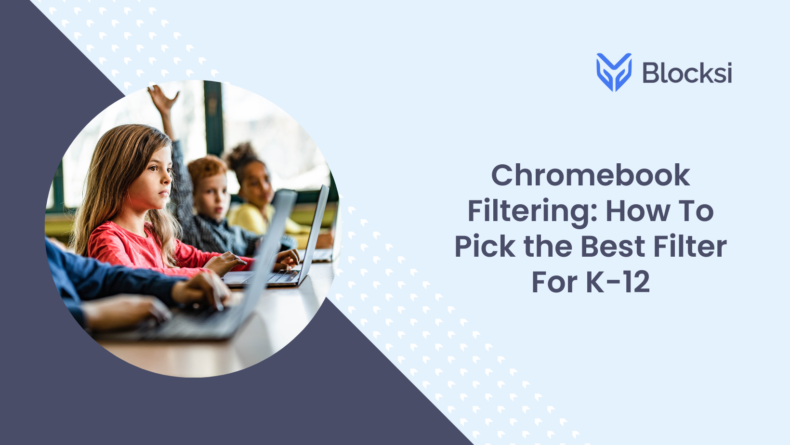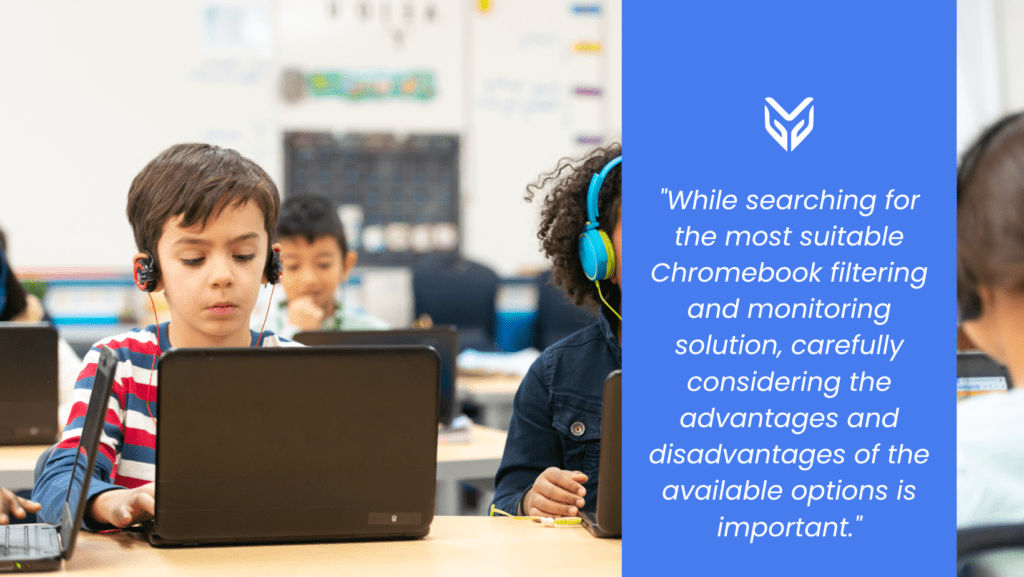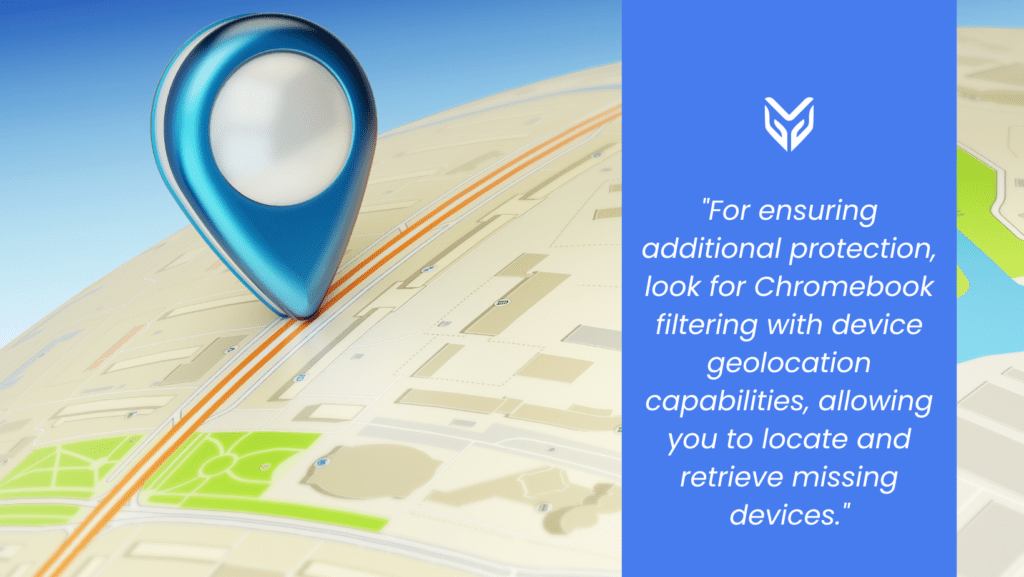NEWS
Chromebook Filtering: How To Pick the Best Filter For K-12

Due to their affordable price, user-friendly interface, and collaborative capabilities, Chromebooks continue to dominate the realm of one-to-one digital learning in K-12 education. With numerous schools already actively using educational technology (EdTech) in its daily usage, students’ online activities must be monitored and, above all – safe. That is why Chromebook filtering must be a part of every modern classroom. In this article, we will delve into the advantages of Chromebook web filtering, which can do everything from blocking inappropriate content in schools to making classroom management easier for teachers.
Since advanced content filtering and device management are vital for student online safety, schools must select a third-party monitoring tool for effective Chromebook filtering. But how can schools determine the right filtering solution? What features are indispensable? Let’s begin by examining why efficient and easy-to-implement content filters are imperative in K-12 education.
Why Is School Content Filtering Essential?
Today, using valuable online educational resources and relying on technology for effective communication is a part of modern education. But on the other hand, schools must protect students from accessing dangerous or inappropriate content. They also value student privacy and seek devices that support and enhance the educational goals of their schools.

Content filtering plays a crucial role in blocking inappropriate online content from reaching student devices. In the case of K-12 schools, web filtering is essential for achieving compliance with the Children’s Internet Protection Act (CIPA), which is necessary to secure E-Rate funding.
But what is another reason you should have it? An efficient school web filter’s main purpose is safeguarding students from inappropriate videos, images, and web articles, while simultaneously identifying and allowing educational content from the internet and popular platforms like YouTube.
While searching for the most suitable Chromebook filtering and monitoring solution, carefully considering the advantages and disadvantages of the available options is important. By asking and answering these next questions, you can effectively determine the best choice for your school.

#1 Does the Chromebook filtering support various operating systems and integration with other platforms?
For efficient management, your Chromebook filtering should seamlessly perform on a wide range of operating systems and integrate with different software systems, accommodating your specific needs and workflows.
#2 Does it offer useful and user-friendly classroom tools for teachers?
Ensure your solution’s Chromebook classroom management tool satisfies teachers’ needs to monitor and manage students’ devices in the classroom and use the software to share content and further the learning experience.
#3 Does the Chromebook web filtering allow picking from various categories?
Make sure the filter of your choice supports choosing different categories to filter. Also, make sure it is customizable enough that it won’t affect your students’ learning process.
#4 Does the Chromebook filtering offer additional users and BYOD (Bring Your Own Device) filtering at no cost?
As new devices constantly join your school network, extending the same protection and policies to them is vital. This way, your entire network complies with CIPA. If you choose a cloud-based web filtering solution, you can rest assured there’s always the possibility of adding more devices without worrying the software won’t support it.
#5 Does the filtering solution provide free, round-the-clock technical support?
Ensuring the safety and security of school devices requires reliable support, available via phone, email, and online chat. Look for a Chromebook filter backed by data scientists and database experts who can assist you whenever you need it, day or night. And also, make sure you choose school content filtering that offers free maintenance, updates, and database improvements.
#6 Is using the Chromebook filter a privacy issue?
For ensuring additional protection, look for Chromebook filtering with device geolocation capabilities, allowing you to locate and retrieve missing devices. Location-related delicate information is only available to admins and does not present a security issue – it is only used if the device is stolen or a student goes missing. Other than that – the filtering solution must follow security protocols and ensure complete privacy protection.

And This Is Why Blocksi Offers the Best Content Filtering for K-12
Blocksi works seamlessly on a wide range of operating systems, including Chromebooks, WindowsOS, iPad, MacOS, and Android devices, and supports integration with teaching LMS platforms, such as Google Classroom, Canvas, and many more.
On the mission of upgrading the modern learning experience, Blocksi offers multi-layered granular filtering that filters Web and YouTube and ensures that zero dangerous content comes through to the students. But at the same time, the granularity ensures educational content doesn’t get blocked in such a way students would be deprived of learning.
Because we want to better both teaching and learning, Blocksi seamlessly integrates with numerous platforms and web apps, such as Google Classroom, allowing teachers to improve teaching in simple but interactive ways. Blocksi’s interface is user-friendly and appropriate for users with any set of tech skills.

You don’t have to worry about adding new devices or your school’s current devices being too much of a burden for Blocksi’s school content filtering. Its filtering offers hyper-scalability and rapid deployment, allowing seamless usage unrelated to the number of users. And what’s more – no hardware is required. You simply install a Blocksi extension, and you are good to go.
Blocksi assures safeguarding students’ safety and privacy. So, besides efficiently filtering dangerous content, it also ensures student privacy is not breached in any way. This means teachers cannot access students’ cameras off-hours – they can, for example, see the camera views only while having a video conference.
If you want to learn more and find out about Blocksi’s hyper-scalable and “hyper-effective” school web filter for yourself, schedule a demo by clicking the button below now.





